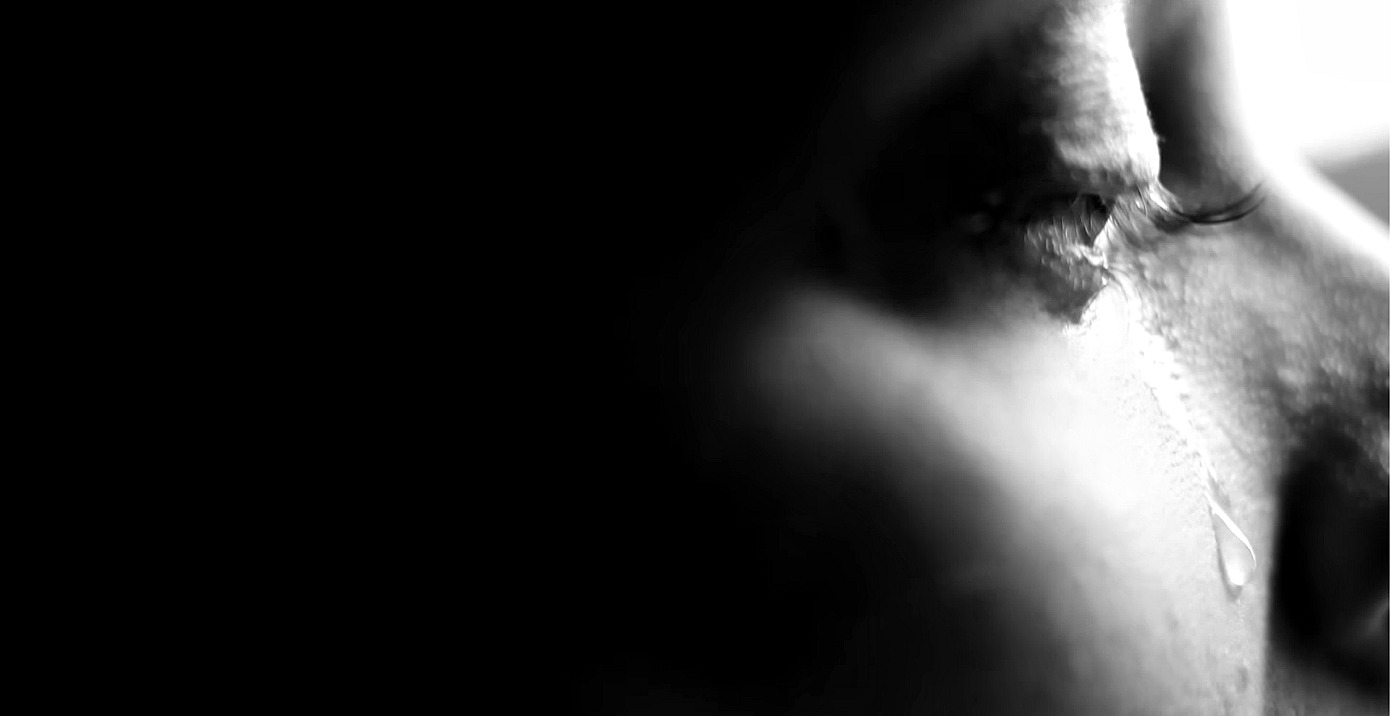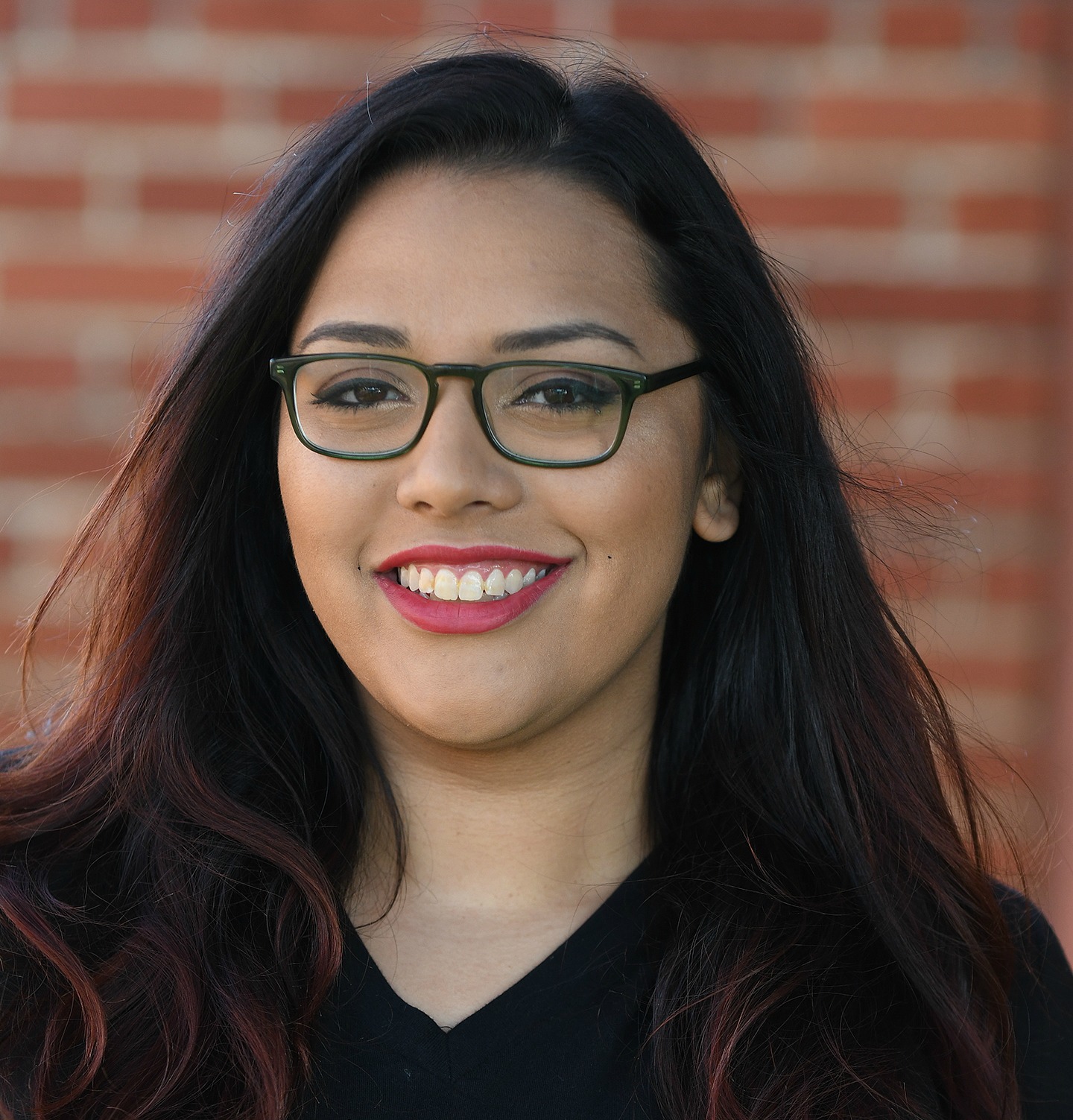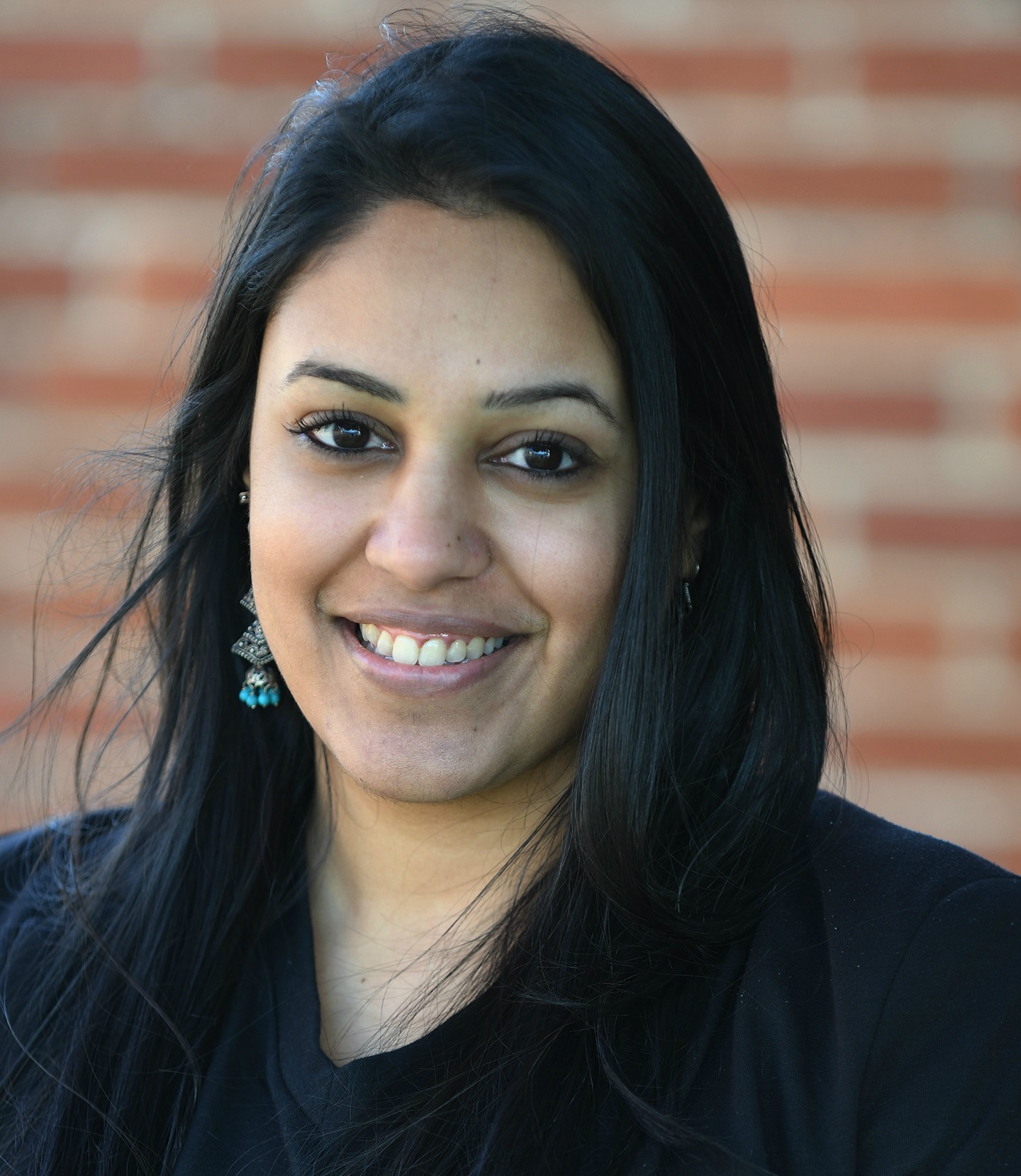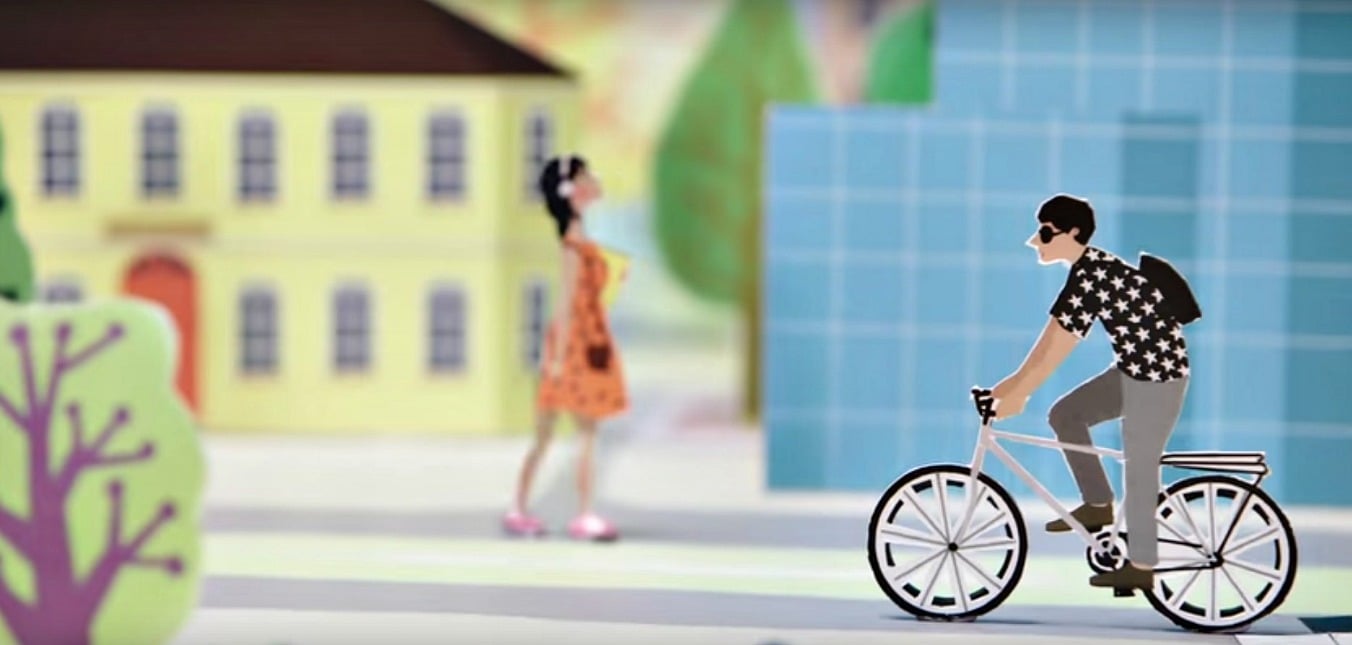Art&Seek and TheaterJones are partnering up during the third annual DFW South Asian Film Festival. The festival showcases films from eight South Asian countries and takes place March 3-5, 2017 at the Perot Museum of Nature and Science and the AMC Village on the Parkway in Addison.
We spoke to festival director Jitin Hingorani and its artistic director Ambica Dev about what we can expect with their third go-round. Jitin also runs a PR company, Jingo Media, in Dallas and Manhattan. The company concentrates on South Asian product, but he’s also a Bollywood entertainment host, he’s on the board of several non-profits that deal with domestic violence for South Asian women and children and owns a luxury travel company. Right. So when does he sleep?
Ambica Dev, a relatively recent Dallas transplant, was born in Illinois. She lived in Saudi Arabia for five years, then came back to Canada and Indiana before joining up with the DFW South Asian Film Festival. She’s now artistic irector, and “a proud Boilmaker” [we had to ask—that’s a loyal Purdue alum].

Jitin Hingorani, founder and festival director for the South Asian Film Festival.
TheaterJones: Jitin, were you based in New York when this idea came to you?
JH I was working in New York, but in a long distance relationship with my partner in Dallas. The more time I was spending in Dallas, the more I realized that Dallas doesn’t really have a South Asian Film Festival. It’s the number five media market in the country, and it was surprising to me that all the top media markets in the country have their own South Asian film festival and Dallas doesn’t. It was part of my permanent move to Dallas that entailed me starting this film festival and making that one of the things I do here.
There has been an Asian Film Festival here already.
JH But not South Asian. Ours is primarily the South Asian film festival: India, Nepal, Pakistan, Bhutan, Bangladesh, Sri Lanka, Afghanistan, and the Maldives.
Average Americans, if they know anything about film from that area, only know about the Bollywood stuff.
JH Exactly. And we go out of our way not to show Bollywood films at our festival because Bollywood films already have a very strong platform, not just in North Texas but all over the country. We go after these smaller, independent films that would never see the light of day, except for a festival like ours.
Chains like Cinemark and AMC now devote one or more screens to Bollywood films.
JH Yeah, and it’s not just Bollywood. There’s also Tollywood, out of South India. That film industry is done in a different language. It’s a completely different demographic.
But they’re not showing the independent productions.
JH There are some exceptions. For example, ‘The Lunchbox’ [2013] was a huge independent film that did the film festival circuit and got a wide release and did well in theaters. It just depends on the film. But we really go after the films that may never even release in the U.S. or go straight to Netflix. So this is an opportunity for our audience to see these films in the theater, the way they were intended.

‘A Billion Coulor Story.’
There are large South Asian communities here in Dallas, yes?
JH Absolutely, there’s a huge South Asian community in Dallas. In fact, we’re in the top five South Asian communities in the country. Obviously, New York/New Jersey is number one, L.A. is number two, Chicago is number three, Houston is a little bigger than ours, and then Dallas/Fort Worth. We have a lot of tech, and as these new companies are opening their offices in Dallas and North Texas, we find more of these South Asian families moving to North Texas . . . which is why it’s even more fascinating that we didn’t have a South Asian film festival here until three years ago. [For example] the New York Indian Film Festival has been around fifteen years.
The films you’re showing are all in local languages with subtitles?
JH They’re in Hindi, Urdu, and Marathi, those are the three major languages. There’s some Punjabi, regional languages, but [the majority] of them are in Hindi, which is the national language of India. And everything is subtitled. Everything coming out of any foreign country has to be subtitled now, to appeal to the West.
It’s a given that you’ll get great turnout from those communities. What would you like to convey to those who aren’t members of those communities?
JH Our first year, without doing any mainstream marketing, we had a 16 percent non-South Asian audience attend our festival. In the second year that grew to 21 percent, and this year we’re expecting that one-fourth of our audience will be non-South Asian, which is huge for a market like Texas. What we’re trying to communicate is that our stories are no different than yours. In a time when immigration and racism are such hot-button issues in our political climate, we need festivals like this that showcase our similarities and not our differences.
You may be getting some help from the Australian-Indian co-production ‘Lion,’ which has great word-of-mouth right now and was nominated for several Oscars.
JH ‘Lion’ was huge for the South Asian community, the fact that it has all these Oscar nominations, it has a great cast and most of the film was shot in India. It’s another great example of a South Asian story making it into the mainstream, and so widely accepted. Just the visibility these films are getting is so heartening for festivals like ours because it shows that there is a desire and a need for these kind of stories to be showcased.

Nisha Bhatt, festival coordinator for the South Asian Film Festival
As for your 2017 festival films, I’m sure you love them all, but which ones do you most want people to come out and see?
JH Because we are in such an interesting time in our country with issues of race and immigration, we have something called Indo-Pak programming that we’re very proud of. It’s to celebrate India and Pakistan’s 70th year of independence, in 2017. We have a lot of films that fit into the Indo-Pak theme, and we have a director from Pakistan who’s coming all the way from Islamabad to our festival, and his documentary on Pakistan musicians, ‘The Journey Within,’ is just phenomenal.
Every single one of these films is special, because they’re curated. Ours is a curated festival, we don’t do submissions. We actually travel to festivals around the world and we hand-select films that we think would resonate with a North Texas audience. Every single one is personally selected by me and three other people in our programming committee. We don’t do the [typical] submission-fee model. We just think it’s better for a starting festival to really make our name with content and programming. Now, down the road, when we get bigger, would we consider doing the submission process? Probably, but that’s a question for down the road. It’s the content that drives the festival and keeps bringing people back.
What are your venues this year?
JH Opening night is at the Perot Museum. After that, we’re at the AMC Village on The Parkway in Addison. They were very interested in getting our festival there because, as you know, they have a big South Asian population that lives in that whole Addison/Plano/Frisco area . . . and it’s a very young, professional-centric tech area, so it’s the perfect, ideal scenario for our film festival to take place there.
The opening night film [‘A Billion Colour Story’] is a stellar film; it got a standing ovation at the Busan and Palm Springs Film Festivals. It’s about an 11-year-old half-Muslim, half-Hindu boy growing up in Mumbai and noticing the religious intolerance around him when it comes to Hindus and Muslims. It’s a beautiful story about looking at racial tensions from an 11-year-old boy’s lens. I want to mention that about one-third of our films have children as a central character. We have a children’s shorts program on Sunday, but several of our other films as well have central characters who are children.
Like ‘Lion.’
JH Yes, and we have a very similar story to ‘Lion’ in our festival. Our [Saturday] centerpiece film, ‘Khoya,’ is about a Canadian-Indian who goes back to India to find his parents because he was adopted in Canada.
I want people who’ve never been to a South Asian film to consider coming to our festival, even if they buy a $15 ticket and come watch one of our films. I think they will get a sense of foreign independent cinema, specifically South Asian. We have a stellar LBGTQ program as well, that’s part of our festival. A lot of South Asian festivals shy away from those kinds of issues, but we take it head-on. We want to show that there’s a very visible LGBTQ population out there that’s making great films. Our LGBTQ section is phenomenal this year. We’re partnering with the Queer Film Festival of Mumbai this year, and getting our films directly from their past programming. It’s a Saturday afternoon block. There’s a theme for every block of programming in our festival.

Ambica Dev, artistic director for the South Asian Film Festival.
Ambica, for those who don’t know, what does the artistic director of a film festival do, and how did you get that job with this festival?
AD I started with Jitin back in 2014, and in 2015 I was the festival coordinator. I handled all the logistics, and was right-hand man for everything he needed. This year, our third year, he promoted me up to artistic director. I help curate films, I work one-on-one with the directors and actors, managing their needs, making sure we have all the DVDs, doing the tech checks, making sure the aesthetics for our parties look good, the venues . . . a lot of the stuff Jitin does, I do side-by-side with him, so it’s a partnership.
The main thing is bringing in films, watching them, curating them, making sure they’re a good fit for our festival and a good fit for our community. That’s pretty much what the artistic director does — in a nutshell.
This is a curated festival. How that’s easier than dealing with hundreds of submissions from anyone who can pay a submission fee?
AD Every month we still get five to ten submissions via our website, and we do acknowledge them all. If they’re a really good fit, we might use them, if not, we have the many films we curate ourselves. It’s rare and few, but there are a few we’ve shown that we did get through our website. Ninety-five percent of our films are ones we personally curated.
Have you gone to Toronto, Sundance, other major festivals to find these?
AD We go all the way to the NFDC Bazaar [film market], which is in India; this year we went to Toronto, to Sundance, and we hit up other festivals worldwide . . . we’ve established ourselves as a premiere festival, so a lot of big directors want to screen their films with us, without so much drama.

‘Yellow Tin Can Telephone.’
What are you most proud of acquiring for this year’s festival?
AD I’m really proud of the selection we have. This year marks the 70th anniversary of the independence between India and Pakistan, and we have a lot of films geared toward that. Our opening night film, ‘A Billion Colour Story,’ is about a boy who has a Muslim parent and a Hindu parent, and how he lives in India with that. We also have our Indo-Pak programming, which are three shorts, a mix of Indian and Muslim directors. We also have great shorts all about the Asian countries, and obviously we have some made by Pakistani directors and some from Indians. We haven’t had such a great mix before.
I watched the opening night short, ‘Yellow Tin Can Telephone,’ and was surprised by the animation.
AD Yeah, the animation in that really blew us away. It premiered at Cannes and we just stumbled upon it. It was something different than what we’ve shown in previous years. ‘Yellow Tin Can Telephone’ is very colorful, and it’s animated, and ‘A Billion Colour Story’ [starts as] a black and white movie, and when you see where it’s going, it becomes color. That was our pairing.
Is the emphasis on children a more recent trend in South Asian cinema?
AD You’ll always have those one-offs that are based on a child, because those tend to be very heart-wrenching, and other films with adults because they focus on really intense topics that we deal with on a daily basis, and we don’t even realize it. It’s a good mix but more recently, I think we have been seeing more child-centric film . . . we [also] have a focus on shorts, I think that’s a really important point. We’ve got really diverse programming.
Our opening night is at the Perot Museum. We’re going to start off with a cocktail reception at 6, then after that around 7-7:15 we show the film with the producer and director in attendance. We do a Q & A with them, then around 9:30, everyone will go up to the third floor where the red carpet and the party will be taking place.
You can also view the complete schedule, with ticket links, in our special section covering the festival — here.














